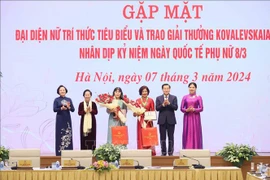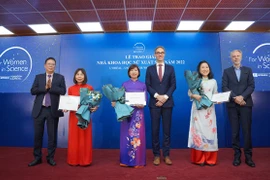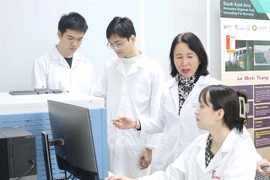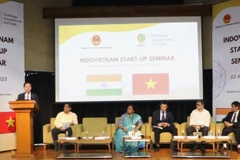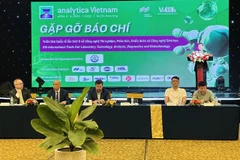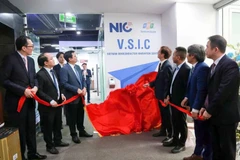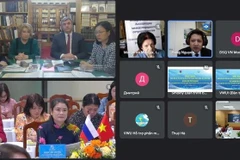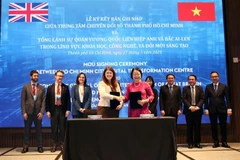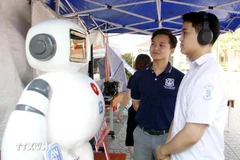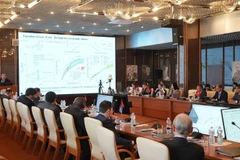Hanoi (VNA) – After 15 years of relentless research, Associate Professor Dang Thi My Dung, Deputy Director of the Institute for Nanotechnology (INT) at Vietnam National University, Ho Chi Minh City, has achieved remarkable success in the field of nano inkjet printing.
On March 8, she was one of two recipients of the prestigious 2024 Kovalevskaia Award, which recognises outstanding female scientists.
Pioneering a new technology
Dung was first introduced to inkjet printing technology in 2009 under the guidance of a French professor. At the time, the field was little known in Vietnam, with limited local resources and equipment. Yet, recognising its immense potential for real-world applications, she pursued her research with determination.
Her journey took her to France and Japan, where she acquired vital expertise. Upon returning to Vietnam, she embarked on numerous scientific projects, facing countless experimental setbacks.
“It’s impossible to count the number of failed attempts,” she admitted. “But with persistence, we are proud to move beyond fundamental research to mastering inkjet technology and developing applied research. INT has also received significant investment in equipment.”
Despite the challenges, she found an advantage in working within an emerging field. Her expertise earned her involvement in major state-funded research projects, even when she was at the doctorate level.
After 15 years in scientific research, Dung has published 60 papers in prestigious international journals, led and completed three national projects, two projects funded by the Vietnam National University, Ho Chi Minh City, and one institute-level project. She has also contributed to three international projects, three national-level studies, one provincial project, one NAFOSTED project, and three university-level initiatives.
Her achievements include three exclusive patents, two utility solution patents, and five industrial design patents. She has led the development of four scientific products that have been successfully applied in practice.
Beyond research, the expert has played a vital role in education, mentoring students and postgraduate researchers. She co-authored a textbook on inkjet printing technology, conductive nano ink, and applications in microelectronics for university and postgraduate curricula. Additionally, she has helped organise a biennial international conference on nanotechnology and applications, co-hosted by INT and France’s CEA-LETI-MINATEC since 2007.
Hopes for policy implementation
Speaking passionately about her field, Dung highlighted the crucial aspect of ink adhesion. Compared to traditional photolithography, inkjet technology offers multiple advantages: it enables high-resolution patterning, accelerates production, and reduces costs.
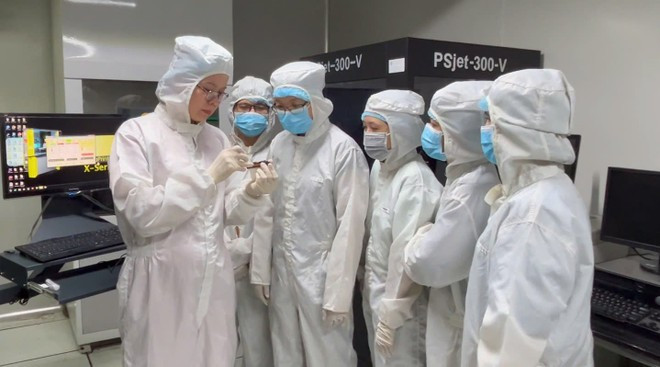
One of its most significant benefits is the elimination of expensive masks, as computer-controlled printing deposits precise ink droplets onto a substrate based on pre-designed images. The simplified process consumes just 10-20% of the chemicals required for photolithography, lowering production costs by around 50%. Furthermore, inkjet printing facilitates the deposition of thin films onto various substrates, including plastic and paper – something other methods struggle to achieve.
Dung is a strong advocate of the Politburo’s Resolution 57, a policy designed to encourage risk-taking in scientific research, streamline bureaucratic processes, and facilitate the commercialisation of innovations.
Reflecting on her own experience, she said the goal of research is discovery, which inevitably involves risks, significant costs, and time. “Many of my projects required repeated trials over months or even years. Every failure brings us closer to success, but unforeseen expenses make precise budgeting difficult.”
She also pointed out administrative obstacles that researchers face when bringing their work to market. Scientists are often unfamiliar with administrative procedures, yet research projects require extensive paperwork – from procurement to licensing. Even when products have high commercial potential, they remain difficult to market because intellectual property rights belong to the State, where their funding comes from.
Dung believes fostering stronger collaboration between scientists and businesses is key. “Scientific research happens in the lab, but businesses drive real-world applications. However, cumbersome regulations deter both sides, leading to wasted resources.”
She hopes Resolution 57 will soon be carried out effectively, allowing scientists to benefit from tax exemptions, streamlined research processes, and mechanisms that ease the transition from lab to industry. She also advocates for granting commercialisation rights to state agencies overseeing research projects, ensuring practical applications and reinvestment into future innovations.
Such reforms would not only empower scientists but also prevent valuable research from being shelved and forgotten, she concluded./.

